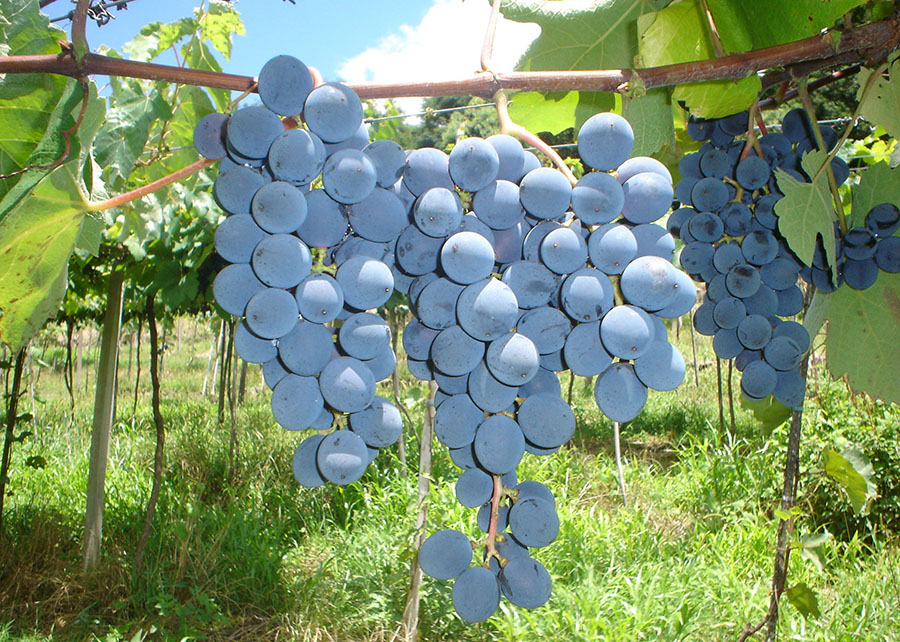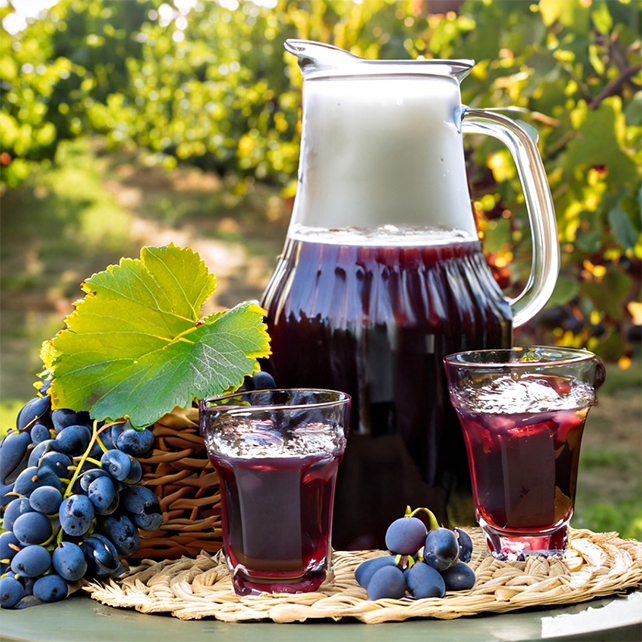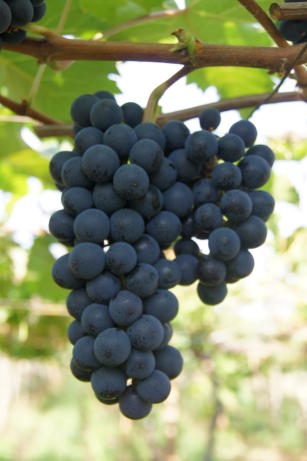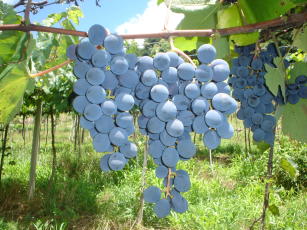Study reveals the nutritional wealth of Brazilian grape juices
Study reveals the nutritional wealth of Brazilian grape juices
Photo: Valtair Comachio

Whole grape juices produced from the varieties BRS Carmem, BRS Magna, BRS Violeta and BRS Cora can be characterized as functional drinks
|
A collaboration between the Federal Institute of the Backlands of Pernambuco State (IFSertãoPE), the Federal University of Bahia (UFBA) and Embrapa resulted in a study that found that whole grape juice made from hybrid varieties created by Embrapa is extremely rich in bioaccessible phenolic compounds. Such substances, which can be absorbed by the body after digestion, are also known as phytochemicals or nutraceuticals. The study identified and quantified 24 of those compounds, eleven of which proved to be bioaccessible. This discovery was made following the InfoGest protocol, which simulates the passage of those compounds through the intestinal barrier, providing a more accurate outlook of how such nutrients interact with our body.
The juice of the grave variety BRS Carmem stood out as it had the highest content of bioaccessible phenolics, indicating that factors like the fruit variety should be further explored in studies on functional foods. According to the researchers, the results showed that each grape variety they assessed is a complex and unique source.
The most bioaccessible phenolic compounds were catechin, procyanidin B2 and gallic acid, all with bioaccessibility higher than 100%. The research also suggests that the bioaccessibility of those phytochemicals is related to the grape variety and its levels of sugars and organic acids, showing that factors such as the choice of variety and grape ripeness level should be considered by the juice processing industry.
Maria da Conceição Dutra, a PhD candidate at UFBA's Graduate Program in Food Science, states that whole grape juices produced from the evaluated varieties (BRS Carmem, BRS Magna, BRS Violeta and BRS Cora) can be characterized as functional beverages with appreciable content of bioaccessible phytochemicals, especially flavanols.
Grape juices are rich in phenolic compounds associated with health benefits. The researchers underscore that recent scientific literature has reported beneficial effects of polyphenols on the immune system against SARS-CoV-2 infections, in addition to preventing the risk of heart disease, type 2 diabetes mellitus, different types of cancer, obesity, modulation of the intestinal microbiota, Alzheimer's, Parkinson's and other neurodegenerative diseases.
The Embrapa Environment researcher Aline Biasoto explains that, in order to have phenolic compounds exert their bioactive and beneficial action in the human body, they have to be bioaccessible. “Their bioaccessibility was assessed through in vitro gastrointestinal digestion models. After simulating the passage of the whole juice through the mouth, stomach and intestine stages, the application of dialysis membranes can simulate the mobility of those compounds through the intestinal barrier. The chemical composition of the grape juice differs from wine's due to the high sugar contents, organic acid profile and absence of ethanol, and these factors can influence the bioaccessibility of phenolic compounds," she asserts.
IFSertãoPE professor Marcos dos Santos Lima observes that today the lower middle São Francisco river valley is an important juice-producing region, which has invested in the preparation of high-quality grape juices from hybrid varieties that are adapted to the local semi-arid tropical climate, such as the four ones they tested. Nowadays, it is estimated that 35 million liters of (both whole and concentrated) juices are bottled.
The studyThe grapes were harvested in April 2021 and given by companies located within the town limits of Petrolina, Pernambuco, and Casa Nova, Bahia. The varieties BRS Magna and BRS Carmem came from Timbaúba Farm, owned by the company Queiroz Galvão Alimentos; the varieties BRS Violeta and BRS Cora, from Asa Indústria e Comércio; and the variety known as early Isabel (ISACL 1), from the company Grand Valle Industrial. Classic grape juice quality parameters were analyzed following the methodologies described by the International Organization of Vine and Wine (OIV). In BRS Cora, BRS MAGNA and BRS CARMEN juices, the main flavanol quantified was procyanidin B2. In the juice of the variety BRS Violeta, the top flavanols found were epigallocatechin gallate and catechin. In all the juices, isoquercetin, rutin and syringic acid were also found to be bioaccessible after digestion, in relevant percentages. Trans-resveratrol, a compound with many beneficial effects reported in the literature, was present and bioaccessible in all stages of the digestive process for the juices of the BRS Cora and BRS Carmem grapes, whose respective bioaccessibility was 85.99% and 35.30%. However, the bioaccessibility of this phytochemical seems to be influenced by the variety, because in the juices of the BRS Violeta and BRS Magna grapes, this compound was not detected as bioaccessible. |
The full paper can be accessed here. It is authored by Maria da Conceição Prudêncio Dutra, Ana Beatriz Martins da Silva, Ederlan de Souza Ferreira, Ana Julia de Brito Araujo Carvalho, Marcos dos Santos Lima and Aline Telles Biasoto.
Whole grape juice in the lower middle São Francisco river valleyProduction: 30 million liters a year of whole grape juice, 100% absorbed by the domestic market. Planted area: 650 hectares, with average yield of 30 metric tons per hectare. Grapes used: Isabel, early Isabel, BRS Violeta, BRS Magna, BRS Carmem and BRS Cora |
Marcos Vicente (MTb 19.017/MG)
Embrapa Environment
Cristina Tordin (MTb 28.499/SP)
Embrapa Environment
Press inquiries
meio-ambiente-imprensa@embrapa.br
Phone number: +55 19 3311-2608
Fernanda Muniz Birolo (MTb 81/AC)
Embrapa Semi-arid Region
Press inquiries
semiarido.imprensa@embrapa.br
Phone number: +55 87 3866-3734
Viviane Zanella (MTb 14.400/RS)
Embrapa Grape and Wine
Press inquiries
uva-e-vinho.imprensa@embrapa.br
Phone number: +55 54 3455-8084
Translation: Mariana Medeiros (13044/DF)
Superintendency of Communications
Further information on the topic
Citizen Attention Service (SAC)
www.embrapa.br/contact-us/sac/




